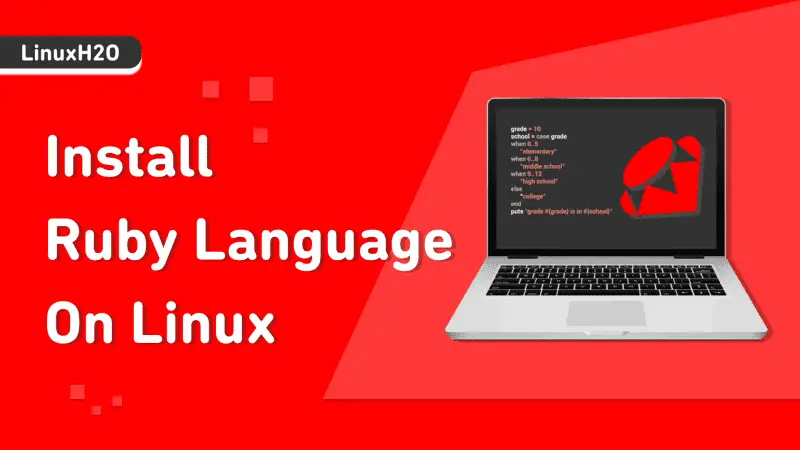In this quick article, you will learn how to install setup Ruby programming language on a Linux operating system. This guide works on all kinds of Linux distributions.
Ruby is a dynamically typed, interpreted, and general-purpose programming language. The language was designed and developed by a Japanese programmer Yukihiro Matsumoto in mid of the 1990s.
Ruby is also an open-source programming language that became popular for its simplicity and productivity. It has an elegant syntax that is natural to read and code.
Installing Ruby Language on Linux
Ruby programming language is already available in all of the official repositories of popular Linux distributions such as Ubuntu, Fedora, CentOS, Manjaro, etc.
So to install Ruby, you just have to execute the installation command.
For Debian/Ubuntu and their derivatives.
sudo apt install ruby-fullFor RedHat, Fedora, CentOS.
sudo dnf install rubyOr if you prefer yum then you can use it like this:
sudo yum install rubyLikewise, Arch Linux and its derivatives like Manjaro, Garuda, EndeavourOS, etc use a package manager named pacman. To install Ruby, just do this:
sudo pacman -S rubySimilarly, use the package manager command for your distribution to install it, in case you’re using a different one.
Ruby is also available as a snap package. So you can use the snap package manager to install it in your system.
sudo snap install ruby --classicWatch Video guide on YouTube
Additionally, You can also watch a step-by-step video guide on YouTube to get a better understanding of it.
Conclusion
So that is how you install Ruby on any Linux distribution. Let me know what you think about it in the comments and subscribe to the LinuxH2O Youtube channel. Till then, keep enjoying Linux.















